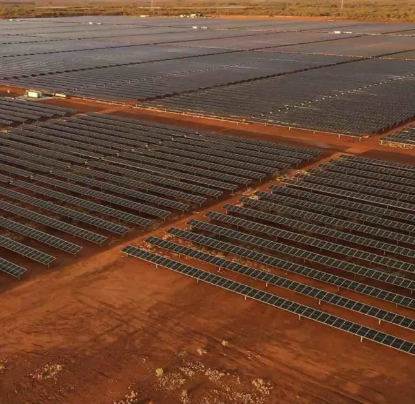
1 May 2023
Australia Emerging as Sustainable Energy Leader
Posted with permission from ESG Impact Zone. A version of this article with graphs is also available.
In 2022, solar PV comprised more than half of global generation capacity additions.
Together, solar and wind were installed three times faster than the combined total of everything else, including hydro, coal, gas and nuclear. This is compelling market-based evidence that solar and wind produce the cheapest electricity.
Global solar generation capacity passed nuclear five years ago. At current solar growth rates, solar will pass the combined total of everything except wind around 2030.
Coal capacity declined in many countries, notably the USA. This trend is also very evident in Australia, where most coal generation will retire by 2030.
Few people are buying new fossil fuelled power stations. This means that the global fossil fuel fleet is aging. If this trend continues (as is very likely) then global fossil generation capacity will decline to low levels before mid-century.
Pathfinding
All the leading countries for per capita solar and wind generation (Figure 5) are in Europe – except for Australia.
Unlike European countries, Australia is physically isolated from neighbours and cannot share electricity across national boundaries. Australia is coping alone with rapidly increasing levels of solar and wind and is finding it to be straightforward.
The government target is to reach 82 per cent renewable electricity by 2030. The Australian experience is highly replicable.
Australia’s location is similar to where 80 per cent of the global population lives: at less than 40 degrees of latitude. Australia transition to clean energy relies on cheap, mature technology from vast production runs that utilise vastly available resources, namely solar, wind, pumped hydro energy storage, batteries, transmission and demand management. Most of the world’s population can readily follow the Australian pathway.
Solar and wind
Global solar and wind capacity reached 1.1 and 0.9 Terawatts respectively in 2022. They must do the heavy lifting to mitigate climate change since that are by far the leading clean generation technologies.
Fossil fuels cause three quarters of global greenhouse emissions. Electrification of everything (transport, heating and industry) using clean solar and wind can rapidly eliminate most fossil fuels. This requires doubling or tripling electricity production in affluent countries, depending on national participation in the chemical, metals and synthetic aviation fuel industries.
Land requirements are modest: complete electrification of everything in an affluent country using only solar requires 50-100 m2 of solar panels per person. Panels can be located on rooftops, in arid areas, in conjunction with agriculture and floating on water bodies.
For northern latitudes, where winter sun is scarce, there is excellent wind. Densely populated regions such as Japan and Indonesia have enormous offshore wind and solar resources respectively. Europe will benefit from Terawatt-scale transmission interconnection to carry offshore wind from the North Sea to the south, and southern winter solar to the north.
Tracking towards zero emissions
Current solar growth rates are fast enough to fully decarbonise energy by mid-century.
Annual solar deployment is growing at about 20 per cent per year (doubling every 3.5 years). This is fast enough to provide 20 Megawatt-hours per person per year for a mid-century affluent global population of 10 billion. This is double the current per capita electricity consumption of typical affluent countries, allowing room for electrification of transport, heating and industry.
Extravagant, sustained, and unlikely growth rates from a small construction base are required for an alternative clean technology to catch solar and wind and make a significant contribution to eliminating fossil fuel emissions before mid-century.
Global hydro generation capacity is 1.4 Terawatts and is growing slowly. Since the number of rivers available for damming is finite, hydroelectricity cannot be a major player in global electricity markets. However, off-river Pumped Hydro Energy Storage has a major role to play in balancing variable solar and wind.
According to the World Nuclear Association, operational global nuclear capacity has been static since 2010 at 0.4 Terawatts, and annual nuclear generation is also static. Nuclear is not competing successfully with solar and wind.
Carbon capture and storage (CCS) is absent from the global electricity industry. Solar and wind capacity is growing much faster than fossil fuel capacity because they produce cheaper electricity. Adding CCS further reduces the competitiveness of fossil-fuelled power stations.
The efficiency of biological capture of solar energy is 20-200 times less than the efficiency of solar, and so large amounts of land are required. Bioenergy competes with food production and ecosystems for arable land, water, pesticides and fertilisers.
Solar thermal, geothermal and ocean energy largely failed in the global marketplace and make trivial contributions to global generation except in a few places.
Photo from ESG Impact Zone.
Follow us on social media:


.d57b427b.png&w=3840&q=75)

















